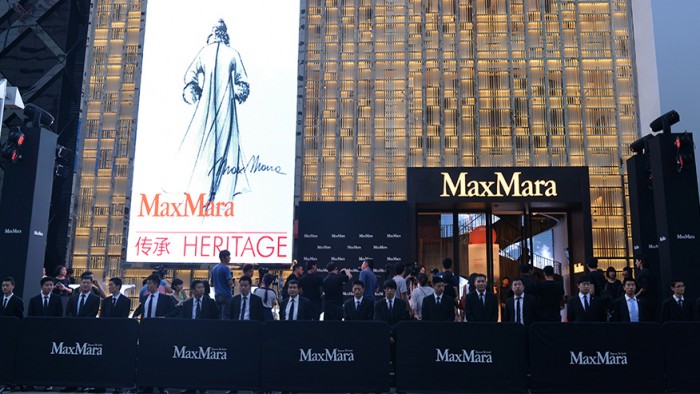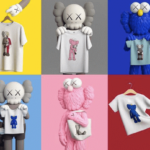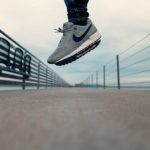Max Mara in China: A Rapid Business Growth
Max Mara Finds Chinese Market Fashionable For Business Growth
Max Mara has grown into a brand bringing in more than $1.45 billion in revenue each year. To strengthen its presence in China, where the brand has been operating since the early 1990s, the Italian high-end fashion house recently hosted its first fashion show in Shanghai presenting its new Pre-Fall 2017 Collection, which included a capsule collection designed in collaboration with one of China’s most prominent artists Liu Wei 刘炜.
First Runway Show in Shanghai
The exclusive event, called Monopolis, took place on December 15th, 2016 in Shanghai’s Exhibition Center. The Italian brand wanted to promote itself even more strongly in China, where it has become, as many other Western luxury brands, very successful in just a decade. Founded by Achille Maramotti in 1951, Max Mara opened its first store in China in 1993. Since then, the luxury Italian fashion brand saw tremendous growth. According to Retail News Asia, the brand now has 414 boutiques across China, with 35 located in Shanghai alone. “Max Mara is becoming more and more popular in Shanghai”, explain this Chinese Culture specialist.
Max Mara in China, a “Good” Brand for Chinese Consumer
In a report on the show, the Telegraph summed up the appeal of Max Mara’s brand as a more understated range of clothing than more elaborate outfits that Chinese customers have favored until now. “The Chinese elite is progressing from crass bling to, well, classic cashmere coats,” according to the newspaper. In previous articles, Daxue Consulting already found that the tastes of China’s elite have shifted away from visibility branded goods in favor of quality, newness, and lifestyle.
In the United States, Max Mara is perhaps best known for producing cashmere outfits worn by celebrities — but Vogue noted that Monopolis showed off different styles, in part because of the collaboration with Wei.
“Total Luxury and Elegance Looks Old”
On its website, the company describes the fall 2017 collection that it debuted during the show as combining “Max Mara’s sartorial milestones and aesthetic with unexpected cuts, volumes and patchworks inspired by the artist’s site specific installations,” and features coats, dresses, clutches, jackets and more.
Liu Wei told the Financial Review that he agreed to help design the clothes — some including images from his extensive body of artwork — because he was looking for a new challenge. “Fashion’s demands for speed and tension makes it a special form of art. I respect it and find it very interesting, though certainly I don’t know enough of it,” he said. The end goal of the non-conformist artist was to break the image of Max Mara, well-known for its elegance.
Max Mara in China: Positive Feedbacks from Chinese Market
Given the largely positive responses to Max Mara’s show in Shanghai, the company could expect to see continued growth through 2017 — which would echo its long-running consistent expansion in China.
For example, back in 2012, the Italian brand was said to be opening one new store per week in the country over a period of six months and hiring more than 5,000 people on the mainland. One of the reasons for the explosive growth of luxury fashion houses like Max Mara in China is said to be the 2008 financial crisis that led to a significant fall in clothing sales in the United States and Europe, forcing companies to shift their focus to other countries.
Max Mara’s event in Shanghai has shown that China is still a viable market for impressive growth. The luxury Italian fashion house will likely consolidate its business plan to ensure that China continues to play a prominent role in its investment and marketing decisions.
Daxue Consulting Expertise: Development into the Chinese market
Fashion and luxury companies need reliable information regarding their stores’ performance all over China. In addition to financial data, brands also need to measure the quality of service, staff’s performance, or to gather specific information about products and services. They need to be informed if distributers and local retailers follow the brand’s guidelines in terms of store management, pricing and Point of Sales promotions. Using mystery shopping campaigns, Daxue Consulting helped several brands in the fashion industry to assess their stores performance and red flags.
Picture Source: http://red-luxury.com/
Stay Up-To-Date: Follow Us on Facebook:















